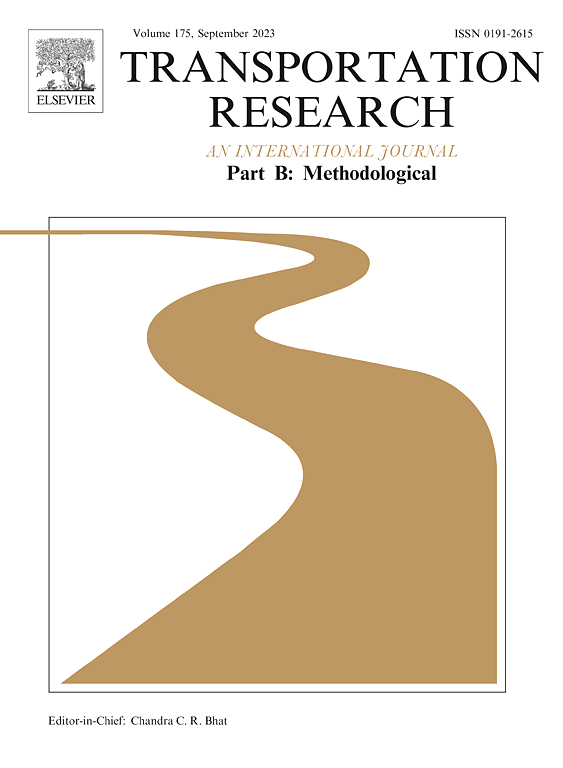Optimizing dual-fuel ship operations considering methane slip
IF 6.3
1区 工程技术
Q1 ECONOMICS
引用次数: 0
Abstract
Liquefied natural gas (LNG) is increasingly viewed as a promising fuel for dual-fuel ships due to its cost-effectiveness, low emissions, and alignment with regulatory requirements. However, the high methane content of LNG, ranging from 85% to 95%, presents a significant challenge because of the phenomenon of methane slip whereby unburned methane escapes from the engine’s combustion chamber and other parts of the storage and transportation systems. Methane slip, which peaks at low ship speeds and decreases at higher speeds, can lead to substantial environmental pollution if it is not properly managed. This study rigorously examines the impact of sailing speed on methane slip rates and recognizes the complexities of fuel usage in dual-fuel ships. We develop a nonlinear mixed-integer programming model designed for container shipping companies that aims to optimize fleet composition, sailing speed, and fuel usage strategies. The objective of the model is to minimize total operational costs, including fuel expenses and taxes related to carbon emissions and methane slip. To address the computational challenges posed by the model’s nonlinearity, we propose a tailored solution method that uses sailing time as a proxy for speed, discretizing these times for effective implementation. The validity of this method is supported by theoretical guarantees and demonstrated through numerical experiments. Our computational results indicate that accounting for methane slip in the operational management of dual-fuel ships can help mitigate financial losses under certain conditions.
考虑甲烷泄漏的双燃料船舶运行优化
液化天然气(LNG)由于其成本效益、低排放和符合监管要求,越来越被视为双燃料船舶的一种有前途的燃料。然而,液化天然气的甲烷含量高达85%至95%,这给液化天然气带来了巨大的挑战,因为甲烷会从发动机的燃烧室和其他储存和运输系统中逸出未燃烧的甲烷。甲烷泄漏在航速低时达到峰值,航速高时减少,如果管理不当,可能导致严重的环境污染。本研究严格检查了航行速度对甲烷滑脱率的影响,并认识到双燃料船舶燃料使用的复杂性。我们为集装箱航运公司设计了一个非线性混合整数规划模型,旨在优化船队组成、航行速度和燃料使用策略。该模型的目标是最小化总运营成本,包括燃料费用和与碳排放和甲烷泄漏相关的税收。为了解决模型非线性带来的计算挑战,我们提出了一种定制的解决方案方法,该方法使用航行时间作为速度的代理,将这些时间离散化以有效实现。该方法的有效性得到了理论保证和数值实验的验证。计算结果表明,在一定条件下,在双燃料船舶运行管理中考虑甲烷漏失有助于减轻经济损失。
本文章由计算机程序翻译,如有差异,请以英文原文为准。
求助全文
约1分钟内获得全文
求助全文
来源期刊
CiteScore
12.40
自引率
8.80%
发文量
143
审稿时长
14.1 weeks
期刊介绍:
Transportation Research: Part B publishes papers on all methodological aspects of the subject, particularly those that require mathematical analysis. The general theme of the journal is the development and solution of problems that are adequately motivated to deal with important aspects of the design and/or analysis of transportation systems. Areas covered include: traffic flow; design and analysis of transportation networks; control and scheduling; optimization; queuing theory; logistics; supply chains; development and application of statistical, econometric and mathematical models to address transportation problems; cost models; pricing and/or investment; traveler or shipper behavior; cost-benefit methodologies.

 求助内容:
求助内容: 应助结果提醒方式:
应助结果提醒方式:


